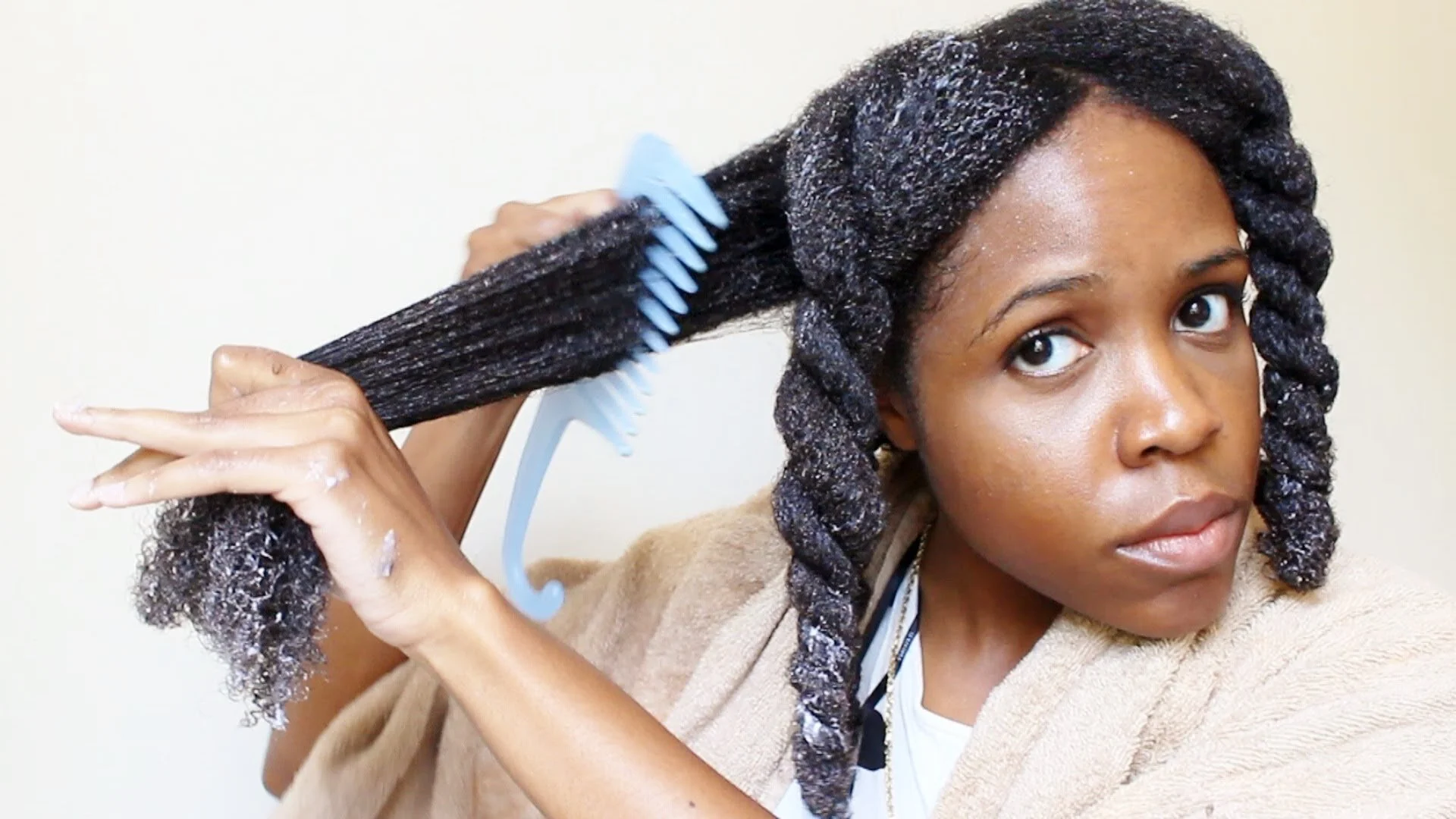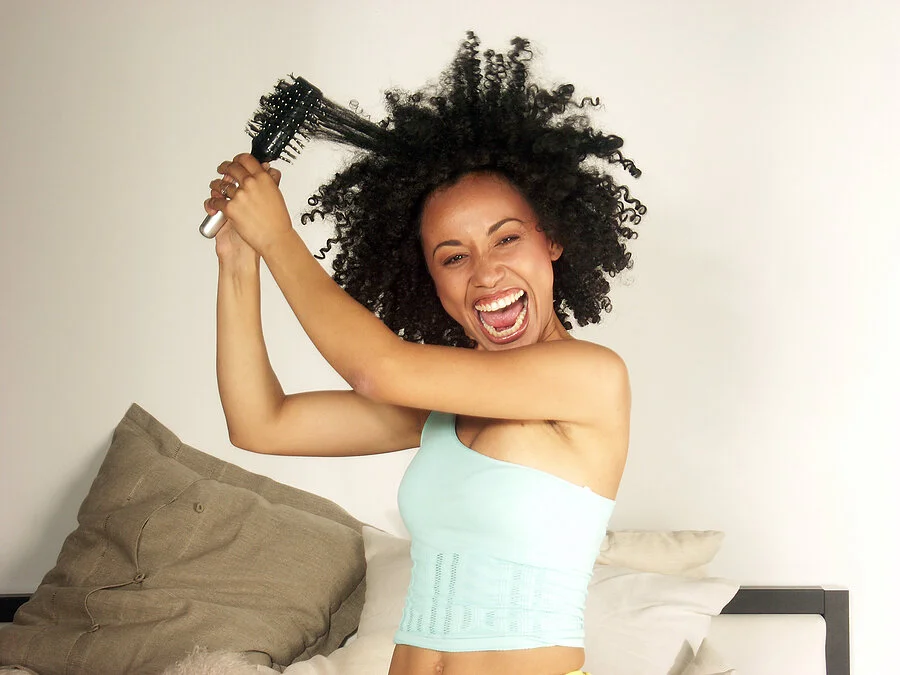Natural Hair Care 101: What You Need to Know About Detangling
I recently noticed that my hair has not seemed to be growing as fast as it used to. However, upon further investigation, I could see growth at my roots (Thanks, gray hair). So, what is actually happening? Well, I figured out that what was really happening was that I am not retaining the length and having some breakage at my ends.
This discovery led me to decide to get back to basics with my hair care regimen. It is easy to get away from what I know works and get lazy with my haircare routine. One of the things that I know I have been doing is not being gentle with the way I detangle my hair. We are always on the go, so I have been rushing through detangling my hair to get to the next thing on my agenda. Speeding through this process is a big No-No. Rushing through detangling causes rips and can even cause more split ends.
Slowly but surely, as I have been back on track, I notice less hair in my brush and less breakage overall. Knots and tangles are an inescapable reality for curly-haired folks. Hopefully, sharing my top tips for detangling will help you in your natural hair journey and help me stay on track.
General Tips for Detangling Your Hair:
1. Detangle in sections- using small sections helps detangling your hair be more manageable.
2. Detangle on wet or damp hair. Detangling on dry hair causes more breakage and snapping.
3. Use a conditioner or other mixture that will give you good slip (see my Naturalista Dictionary for more information on slip).
4. Use the appropriate tools for detangling. Using your fingers, a wide-tooth comb or a detangling brush are some of the best for decreasing damage while detangling your hair.
5. Always begin at the ends of your hair and work your way up to the roots.
My Favorite Products and Tools for Detangling:
Products For Slip: Aussie Total Miracle Conditioner or African Pride Moisture Miracle Pre-shampoo treatment.
Tools for Gentle Detangling: Fingers (always start with your fingers), Tangle Buster Paddle Brush, Denman Brush, or Wide-tooth comb.
More tips for Specific Knots and Tangles:
For single strand knots: These types of tangles, also known as fairy knots, happen when a single strand of hair became knotted on itself. There is no way to detangle these types of knots so snipping them with hair scissors is the only way to get rid of them. Why not just leave them? Well, they can get caught on other hairs and cause damage.
For frequent knots at the nape of your neck: If you run into this issue, it may be because of your nighttime routine. Make sure you are either wrapping your hair up with a satin or silk scarf or bonnet or sleep on a silk or sating pillowcase. These tools not only keep your hair moisturized, but they will help prevent this type of knot or tangle.
For frequently knotted ends: If you find that you have more tangles at the ends of your hair or that it takes longer to detangle your ends than usual, it is probably time for a trim or haircut. Trimming your ends may seem counterintuitive to growing long hair, but hanging on to damaged hair is actually worse. I will start to affect your healthy strands.
Check out this quick tutorial below of me detangling on damp and on wet hair.
As an Amazon Associate I earn from qualifying purchases.
You May Also Like:






